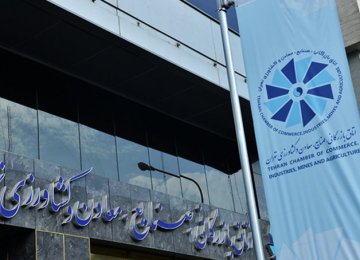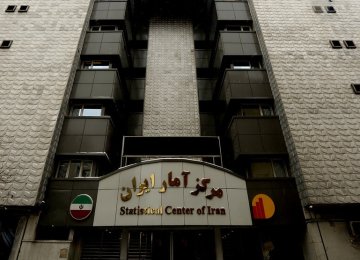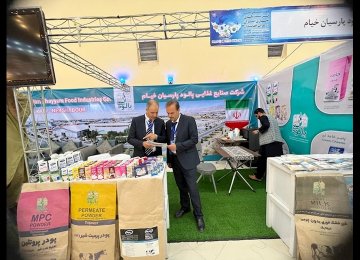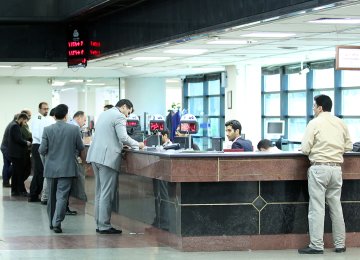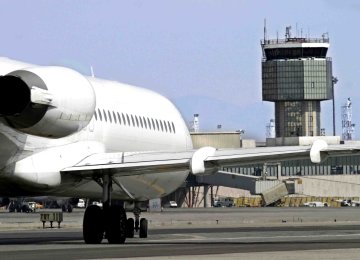International business research groups and organizations are predicting economic growth in Iran after the country reached an agreement with the P5+1 (the five permanent members of UN Security Council plus Germany) on July 14 in Vienna to limit its nuclear program in exchange for the relief of economic sanctions imposed by the UN Security Council, the United States and the European Union.
Business Monitor International market research group recently published a report into the Iranian economy and the effect that the end of the relief from sanctions will have on the country in the coming years. Meanwhile, economists at Bank of America Merrill Lynch also published a lengthy report on July 15, predicting huge opportunities for the country's economy after sanctions are lifted.
BMI has predicted that Iran's economy will grow following the relaxation of sanctions, forecasting real growth in gross domestic product of 0.6% and 2.9% in 2015 and 2016 respectively. BMI’s forecast is much more moderate than the Bank of America Merrill Lynch’s which predicted that stronger oil production and sanctions relief could bring Iran’s real GDP growth to 6-7% in the short-term, Business Insider reported.
“With the injection of cash and higher oil exports, the deal would not only boost domestic economic activities, but the spill-over effects for its main trade partners could be substantial as sanctions are lifted,” wrote the BAML’s report.
BMI’s played-down growth forecast could be explained by its prediction that globally low oil prices will play a key role in limiting the impact of the unwinding of sanctions on Iran’s economy. BMI forecasts oil prices to average $59 per barrel in 2015 and $61 per barrel in 2016 as a result of global oversupply, which will in turn ensure government spending and private consumption growth to be relatively low. Below is a snippet from BMI’s report on Iran’s economic outlook.
> Private Consumption, Gov't Spending
Iran's economy is dominated by private consumption (39% of GDP in 2014), a share which has remained fairly constant over the past decade. BMI predicts that this percentage would rise 2% and 4% in 2015 and 2016 respectively as a result of the easing of sanctions, while warning that subsidy cuts, high inflation and a depreciating rial could dampen consumer demand substantially and weigh on growth in the coming quarters.
Government consumption will see minimal growth as austerity measures take effect. BMI forecasts sustained fiscal deficits over the coming years primarily on the back of lower oil prices and modest reduction in spending.
> Fixed Investment, Net Export
BMI expects fixed investment and exports to increasingly become important drivers of growth, while the easing of financial sanctions will also facilitate project finance and attract foreign investment into the infrastructure sector.
Foreign companies in nearly every sector have recently expressed interest in returning to the Iranian market; however, the difficult operational environment and bureaucracy poses huge impediments to foreign companies looking to tap into one of the Middle East's largest markets.
BMI also predicts that net exports will see a modest rise as oil exports are gradually allowed as of the first quarter of 2016. The report estimates that Iran could bring back on line some 550,000-650,000 barrels per day of additional crude oil production in the one-to-two years following a lifting of oil sanctions, in contrast to a more mainstream expectation of additional output capacity of 1 million barrels per day shortly after the lifting of sanctions.
> Fiscal Policy
BMI predicts that Iran will enact further cuts in capital and current spending over the coming quarters in a bid to mitigate the impact of lower oil prices. On the plus side, a deal on Iran's nuclear program is expected to give much-needed relief as assets held overseas will be unfrozen. BMI forecasts the budget deficit to come in at 3.5% and 2.5% of GDP in the current Iranian fiscal year (from March 21, 2015 to March 21, 2016) and the following year respectively, compared to an estimated 2% of GDP last year.
Overall, the report predicts current expenditure to increase by an average of 15% in nominal terms over the next two years; however, given elevated inflation this will amount to a cut in real terms as the inflation is forecasted to average 20% in 2015. Oil sanctions are expected to be gradually relaxed from 2016, which will help the fiscal deficit narrow to 1.8% of GDP in fiscal year 2018/19.
As the cutbacks in government’s current and capital spending are not expected to have enough of an impact to match the decline in revenues, privatization efforts are expected to pick up steam. Privatization plans were part of the Fifth Five-Year Economic Development Plan (2011-2016). The government recently announced the transfer of about $330 million worth of shares of state-run companies to the private sector.




